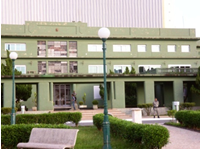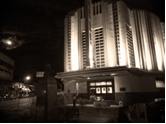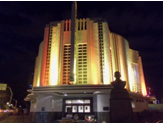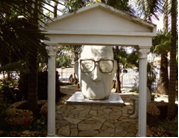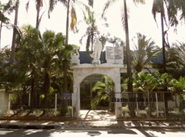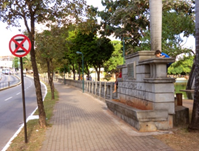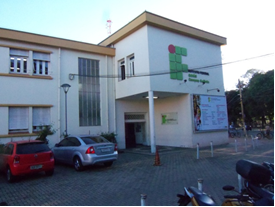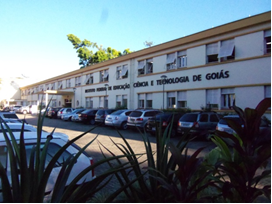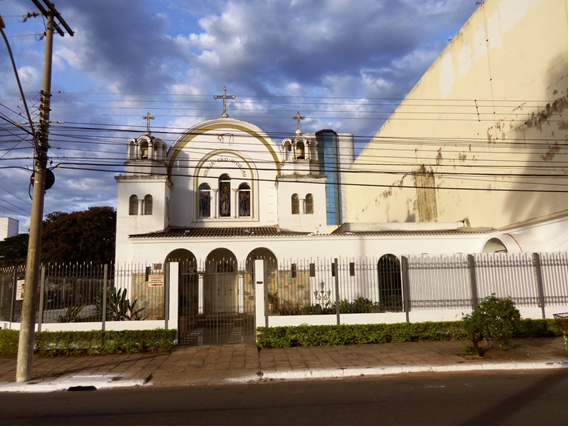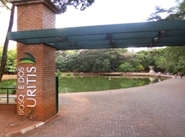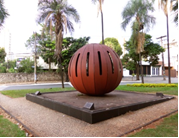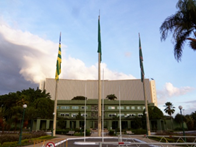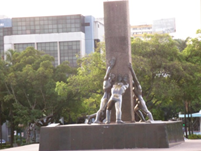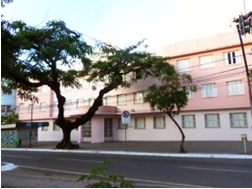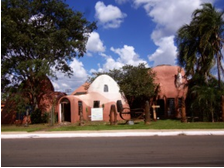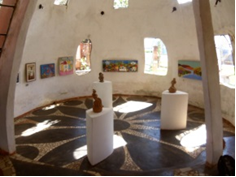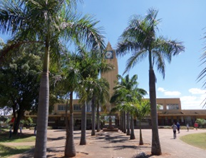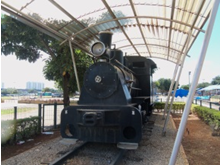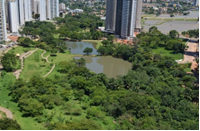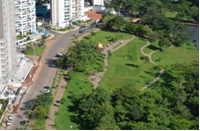GOIÂNIA
Pronunciation: [ɡoˈjɐ̃niɐ]
The twin cities of Goiânia in the world are :

The beauty of the city of Goiânia is evident in every direction—North, South, East, and West—showcasing the vibrant spirit of its people. Goiânia was established on October 24, 1933, as a planned city designed to accommodate 50,000 inhabitants.
By 1950, Goiânia already featured numerous public buildings influenced by the Art Deco architectural style. This architectural heritage is now considered one of the largest collections in Brazil. The ensemble includes 22 public buildings and monuments, forming the original pioneer nucleus of Goiânia and the Campinas district (now a part of Goiânia’s center).
Notable Landmarks
- The Goiânia Theatre
The Goiânia Theatre was built in Art Deco style for the Cultural Baptism of the New Capital of Goiás and Brazil. The official opening took place on July 5, 1942, and for eleven days (from July 1 to 11, 1942), the city embraced a climate of euphoria. During this period, the theater became the venue for festivities, speeches from politicians across the country, formal sessions, dances, and many inaugural performances.
- The Palace of the Press – Diário da Manhã Journal
These are photos of the Palace of the Press, where today the Morning Newspaper Diário da Manhã is located. It houses many monuments of contemporary art that feature the daily life of the rural people of the state of Goiás, mixed with Regional and Popular Culture.
- The Lake’s Roses Park
The Lake’s Roses Park– the only one in downtown, with a thin stream of water that flows from a natural source – was built in 1940 and recently renovated. Originally, it housed a large bed of roses (hence the origin of the name, though it no longer exists today) and other representative Art Deco elements such as a springboard and walls – which have endured to this day. It also houses the Goiânia Zoo.
- The Federal Institute of Goiás (IFG)
This is the IFG, the Federal Institute of Education, Science, and Technology of Goiás (IFG). Originally established as the Training School and Craftsman (1909) and later known as the Technical School of Goiânia, the institution played a significant role in the development of the city. On July 5, 1942, the school was part of the celebrations for the cultural baptism of the new capital of the State of Goiás. Today, the building is classified as an architectural and urban heritage site of Goiânia due to its Art Deco style, which is evident in its windows, doors, portico, and flag. These features display strict geometric shapes, soft colors, and vertical lines, which create the perception that they are larger than they actually are.
- The Parish of St. Nicholas
This Eastern Orthodox church, located at the intersection of Republic of Lebanon Avenue and Anhanguera Avenue, contrasts its Byzantine architecture with Goiânia’s predominantly Art Deco and Roman Catholic downtown.
- The Buriti’s Woodland
- The Civic Square – Dr. Pedro Ludovico Teixeira
The Civic Square Mr. Pedro Ludovico Teixeira is considered the starting point for the construction of Goiânia, the capital of the Brazilian state of Goiás, in 1933. In this square, we find the Emerald Palace, the official residence of the governor of Goiás since its creation in 1933, with former Governor Pedro Ludovico Teixeira being the first resident of the palace. The site also houses the Pedro Ludovico Palace, which currently serves as the state’s administrative center. Additionally, it is home to the Museum of Natural History Zoroastro Artiaga, and at its center stands the Monument to the Three Races (ethnic groups): white, indigenous, and black.
- Goiás Avenue and the Grand Hotel
Inspired by French boulevards, Goiás Avenue was one of the first streets built in Goiânia. Declared national property by IPHAN in 2004, the avenue is known for its Art Deco buildings and the iconic clock constructed during the city’s cultural baptism. In this avenue, there is still the Grand Hotel, which opened January 23, 1937 in the city of Goiania, in downtown. It is the first hotel in Goiânia and one of the most important buildings of the city in Art Deco. It has been the site of important business meetings, since all the important people who came to Goiania were there. Today, the Grand Hotel is a museum and a point of culture to the city.
- The Cathedral of the Arts
The Cathedral of the Arts, located in the district of Santa Genoveva, is a space dedicated to various forms of art such as literature, film, painting, and sculpture. It was built by Mr. Noah, who now takes care of the monument he gifted to the City Hall. The cathedral’s mound-like shape (resembling a termite mound) evokes the caves of Cappadocia, Turkey, as well as the art of Spanish Gaudí. According to Mr. Noah, the Cathedral houses many paintings, both primitive and contemporary, created by him and other local artists. Inside the monument, there is also a cinema for the exhibition of short films. Ultimately, it serves as a hidden “Noah’s Ark” of art in the city.
- The Worker’s Place
The Worker’s Place, once home to a railway station, could be considered the “King’s Cross” of Goiânia in its day, though it is no longer in operation. Today, it hosts the famous Hippie Fair, with over six thousand exhibitors offering clothing and accessories. The station also once featured the locomotive known as “Maria Smokey,” which transported people and goods throughout the region. Sadly, both the railway station and the locomotive have become symbols of a bygone era of glamour that will never return.
- The Flamboyant Park
This is the newest postcard of Goiânia. Opened in September 2007, it features two lakes (with light fountains), a wooden deck, a gazebo, a playground, a bike path, jogging tracks, a sports area, internal paths, and will soon also include a Japanese garden. The park is home to copies of buriti trees and other native plants of the Cerrado, the Brazilian savannah. The park is open to the public during the day and evening, with free access.
***
Aviso de direitos autorais
Todas as fotos e informações apresentadas aqui são propriedade exclusiva de seu autor. Elas estão protegidas por direitos autorais de Johnatan Willow. Qualquer reprodução, distribuição ou uso, total ou parcial, sem autorização prévia por escrito do autor é estritamente proibido.

